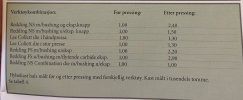Dimner
Named Man
Well, it's gotten to the point where I can justify the purchase of a neck sizing die with interchangeable bushings.
So what does the group here think would be the best brand/model to get? I'll be using it for 30 cal cases (and 7.7) for both Jacketed and PC bullets. All rifles are bolt or single shot. At best, I'm looking to stay at MOA or .75MOA. So no need for anything uber fancy to get below that.
I don't have a mill, so I will not be able to make my own bushings. I'll need to stick to MFG available bushings.
So what does the group here think would be the best brand/model to get? I'll be using it for 30 cal cases (and 7.7) for both Jacketed and PC bullets. All rifles are bolt or single shot. At best, I'm looking to stay at MOA or .75MOA. So no need for anything uber fancy to get below that.
I don't have a mill, so I will not be able to make my own bushings. I'll need to stick to MFG available bushings.

